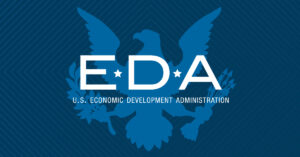The Iowa Environmental Council urges Iowa utilities to use federal clean energy programs to meet greenhouse gas reduction goals of carbon-free electricity by 2035.
In 2023, 64% of Iowa’s energy came from wind and solar, with fossil fuel generation dropping 6% since 2021, says the Iowa Electric Generation Council’s 2024 “Condition of the State” report.
Steve Guyer, energy policy counsel for the Iowa Environmental Council, emphasized in a recent presentation that renewable energy generation is cost-competitive with fossil fuels.
“Even the lowest cost fossil source is higher than wind or solar,” Guyer stated, referencing a Lazard 2024 report.
The Lazard report notes that while renewable energy is cost-competitive, diverse generation fleets are required to meet long-term power needs, especially given rising demands from AI and data centers.
Federal tax credits and incentives from the Inflation Reduction Act will further ease the transition to fully renewable energy in Iowa.
“We are uniquely positioned, but aggressive use of the Inflation Reduction Act can get us there,” Guyer said.
Guyer highlighted the Energy Infrastructure Reinvestment (EIR) Program, tax credits, and bonuses for projects in energy communities.

The EIR program funds projects that transition fossil fuel plants to renewable energy infrastructure or carbon capture technologies.
Report calls 100% renewable claim a ‘shell game’
The council’s report questions energy companies MidAmerican Energy and Alliant Energy, which both own coal plants but have invested heavily in wind energy.
MidAmerican’s website states 62% of its energy in 2023 came from wind.
However, Guyer criticized MidAmerican’s claim of delivering 100% renewable energy to Iowa customers.
The company’s GreenAdvantage program uses renewable energy certificates (REC), which quantify renewable energy added to the power grid. Once in the grid, it’s impossible to track specific energy sources, but RECs allow consumers to represent renewable energy usage.
The council’s report calls this practice a “shell game,” claiming MidAmerican still operates coal plants, burdening Iowans with pollution.
Geoff Greenwood, spokesperson for MidAmerican Energy, said coal, gas-fired, and nuclear plants fill gaps when renewable sources are unavailable.
“MidAmerican customers can confidently say their electricity was offset with emissions-free power over the year,” Greenwood said.
Greenwood clarified that the goal of 100% renewable energy refers to the amount generated compared to the amount used by Iowa customers annually.
“MidAmerican has added wind energy at no net cost thanks to federal tax incentives and will continue making clean energy investments,” he added.
The International Energy Agency predicted in July that global electricity demand will rise by 4% in 2024 and another 4% in 2025.
Guyer said increasing electricity demands mean clean energy will need to come from varied sources.
“We’ll see a shift where customers generate their own power and contribute to the overall system,” Guyer noted.
The Iowa Environmental Council will host its annual conference on Tuesday, Sept. 24, at Drake University.





